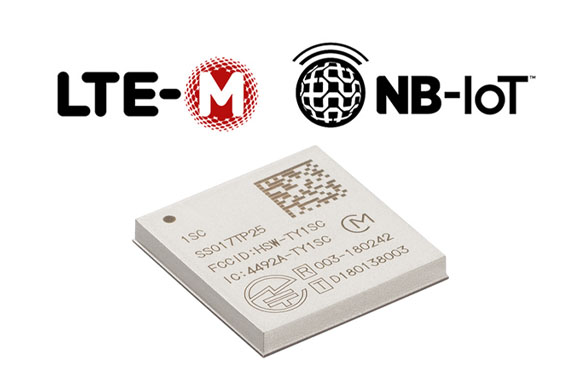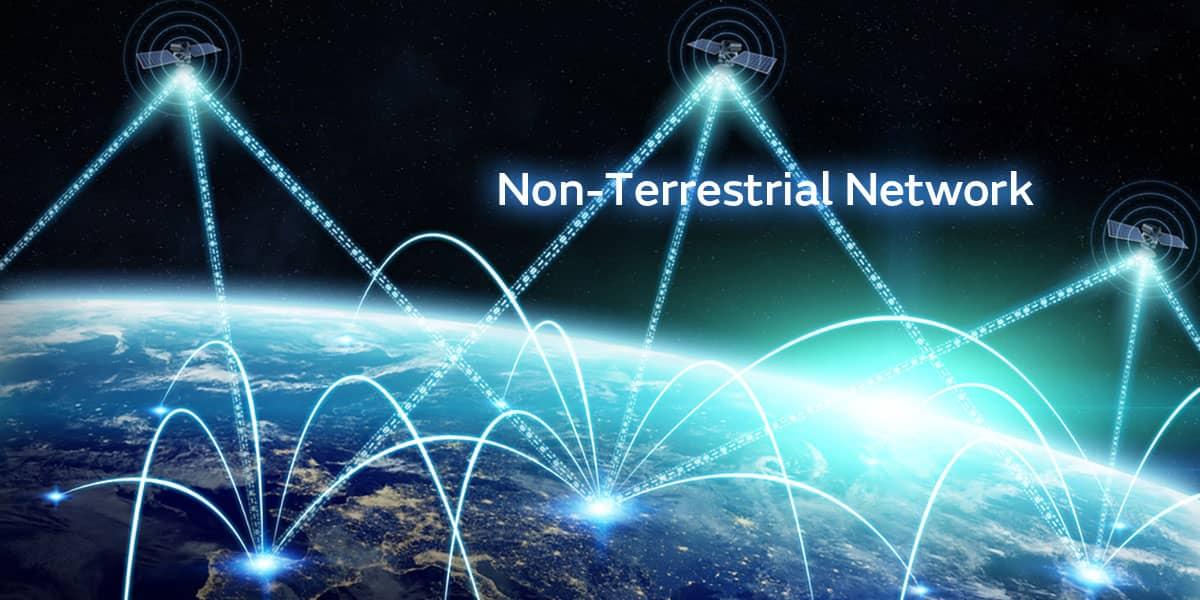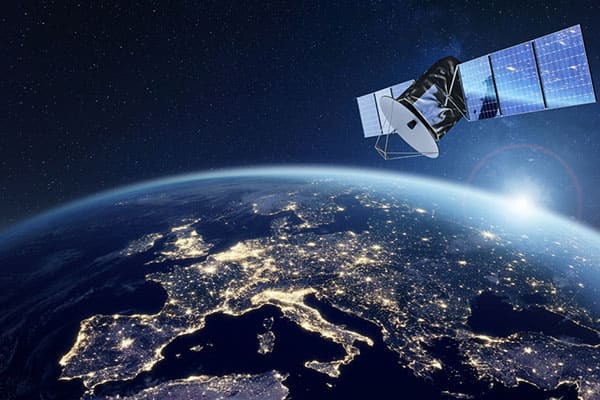Type 1SC LBAD0XX1SC


A non-terrestrial network (NTN) is a type of wireless communication network used for applications such as mobile communications. The term refers to multilayered networks linking terrestrial base stations, ships at sea, high-altitude platform stations (HAPS), and communication satellites in space.
These characteristics allow an NTN to overcome the limitations of land-based networks, dramatically expanding the coverage of the communication infrastructure to include areas such as mountain valleys and areas of the ocean far from land.
Among non-terrestrial networks, this article focuses on wireless communication networks comprising elements at high altitudes, far above the land and the sea. R&D, test beds, and demonstrations are starting to be rolled out as part of plans for the development of non-terrestrial networks in the stratosphere and outer space in preparation for the advent of the next-generation telecommunications standard known as Beyond 5G (5th Generation Mobile Communication System, B5G)/6G (6th Generation Mobile Communication System).

As shown in Figure 1, a non-terrestrial network deployed in the skies above us would be composed of different types of transmission equipment for which higher altitude corresponds to wider coverage area. Naturally, the greater the distance from the Earth’s surface, the greater the signal delay, and the different types of transmission equipment will be used for different purposes depending on their location, in outer space or the stratosphere, or at ground level. This makes it possible to build a communication infrastructure with a wider coverage range than was previously attainable, such that we will be able to say that “nowhere on Earth is out of range.”
Below, we present an overview and feature description of the artificial satellites (GEO and LEO) and unmanned aircraft (HAPS) that compose the non-terrestrial network shown in Figure 1.

A geostationary satellite or geostationary Earth orbit satellite (GEO) is the component of non-terrestrial networks for B5G/6G that operates at the highest altitude. These artificial satellites are positioned approximately 36,000 km above the Earth’s equator. They orbit the Earth at a speed that matches the Earth’s rate of rotation, so they appear to be stationary above a specific spot on the ground. Generally speaking, weather satellites that predict the weather based on meteorological conditions over wide areas belong to this category of satellites.
GEOs used in communications networks operate at a high altitude, allowing them to communicate with a wide area. It is said that three or four such satellites would be able to cover the entirety of the Earth’s surface. However, their distance from the ground means that they have a greater data transfer lag than other types of transmission equipment, and their data transfer speed is said generally to be on the order of several megabits per second (Mbps). Also, since sending signals to the Earth’s surface requires high output, GEOs tend to be larger than low Earth orbit satellites (LEOs), discussed below, and launching them into orbit requires larger rockets.

A low Earth orbit satellite (LEO) is a type of artificial satellite that operates in space but in a lower Earth orbit*1 than a GEO, typically at an altitude of several hundred to 2,000 km. Unlike geostationary satellites (GEOs), they are not synchronized with the rotation of the Earth.
The Hubble Telescope and the International Space Station (ISS) also operate at a low altitude, using a low Earth orbit of around 400 km, at most. However, it is said that LEOs used in NTNs will be positioned at altitudes of around one thousand several hundred kilometers.
LEOs operate at lower altitudes than GEOs, allowing data transfer with low delay and using low-output signals. Such satellites can also have a smaller size. LEOs support communication speeds with the Earth’s surface of several hundred megabits per second (Mbps), so it is said that they could be used for services enabling direct communication between smartphone handsets and satellites.
On the other hand, since LEOs operate at lower altitudes than GEOs, the coverage area of each satellite is narrower, and satellites operating in low Earth orbits have a higher orbital speed. This mean that it is necessary to make use of “satellite constellations” consisting of multiple small LEOs operating in coordination in order to provide stable communication under these conditions. The term “constellation” is a reference to constellations of stars and is used to refer to a coordinated group of LEOs.
*1 The definition of “Earth orbit” varies among different countries and organizations. For example, the European Space Agency (ESA) defines Earth orbit as orbiting the Earth at an altitude of up to 1,000 km, whereas the Japan Aerospace Exploration Agency (JAXA) specifies an altitude of up to 2,000 km.

A high-altitude platform station (HAPS), sometimes called a stratospheric communication platform, is an unmanned aircraft (some are like airplanes while others take the form of balloons or airships) flying through the stratosphere at an altitude of around 20 km and that functions as an airborne communication base station.
Generally speaking, passenger jetliners can reach altitudes up to around 10 km, and the portion of the stratosphere in which a HAPS operates is about twice that high. At this altitude, air currents and weather conditions are comparatively stable, and there is little air resistance. Since the air density is less than that needed for an unmanned aircraft to achieve the necessary dynamic lift, it is said that operational HAPS models will carry solar panels or batteries that will enable them to remain airborne continuously for several weeks at a time.
Whereas terrestrial base stations generally have a coverage area spanning a radius of a few kilometers to a few tens of kilometers, a single HAPS is likely to have a coverage area spanning a radius of around 100 km. Also, since they are closer to the Earth’s surface than artificial satellites operating in space, they are expected to play a major role in the new communication infrastructure for B5G/6G due to their minimal data transfer lag. Nevertheless, since the stratosphere occupies the territorial airspace of different nations, unlike outer space, it can be said that the establishment of a legal framework in each country will be key to the international implementation of HAPS and the provision of communication services.
In conclusion, we will discuss the advantages of and trends in non-terrestrial networks.

A big advantage of non-terrestrial networks, which unlike terrestrial networks comprise elements operating in the stratosphere and outer space, is that they can provide a communication infrastructure that is relatively unaffected by natural disasters such as earthquakes or tsunamis.
In addition, they have the potential to dramatically expand the coverage area to the extent that nowhere on Earth is out of range. This will enable people to use their smartphones to communicate in emergencies even if they find themselves in locations where communication was difficult previously, such as mountain valleys or while at sea.
As a result, it will be possible to maintain the communication infrastructure in time of emergencies such as natural disasters or accidents, regardless of location, and to extend the mobile communications network over ever broader areas without interruption, preventing problems from occurring when in the mountains or while traveling by sea.

One big feature of non-terrestrial networks is the remarkable trend toward active involvement by private companies. In the past, most space projects were national initiatives, but nowadays a wide variety of companies around the world, not only in the hardware field but in fields such as communication services as well, are teaming up and taking part in aerospace projects, including the non-terrestrial network business.
Examples include the development and manufacture of artificial satellites and HAPSes, components used in them, and telecommunication equipment (payloads) loaded on them. A wide range of companies are involved in these business endeavors, including some that operate rockets that carry artificial satellites into space. In particular, the next-generation mobile communications field called B5G/6G is serving as a starting point for the rapid growth of businesses serving a market that is global in scale.
Murata Manufacturing develops and manufactures a variety of wireless communication modules. As part of this effort, we are working to develop products that meet changing needs, including connectivity modules compatible with non-terrestrial networks (NTNs). For details, refer to the page linked to below.